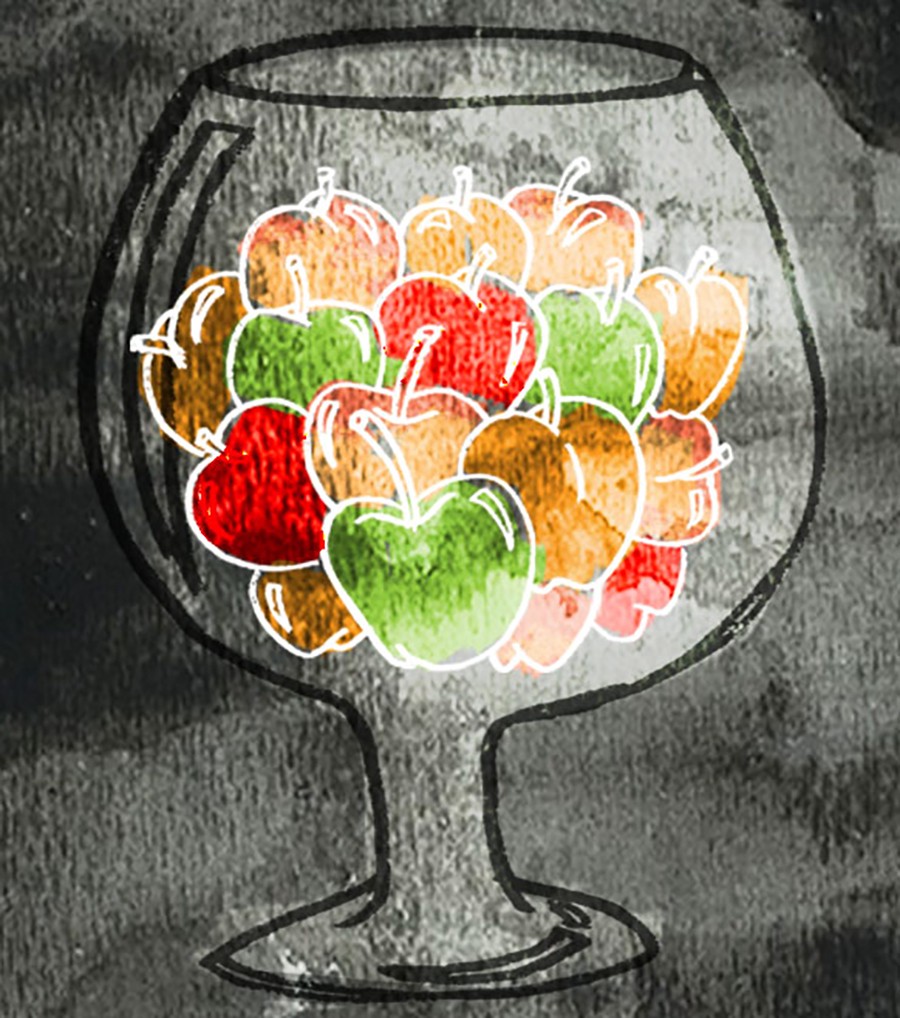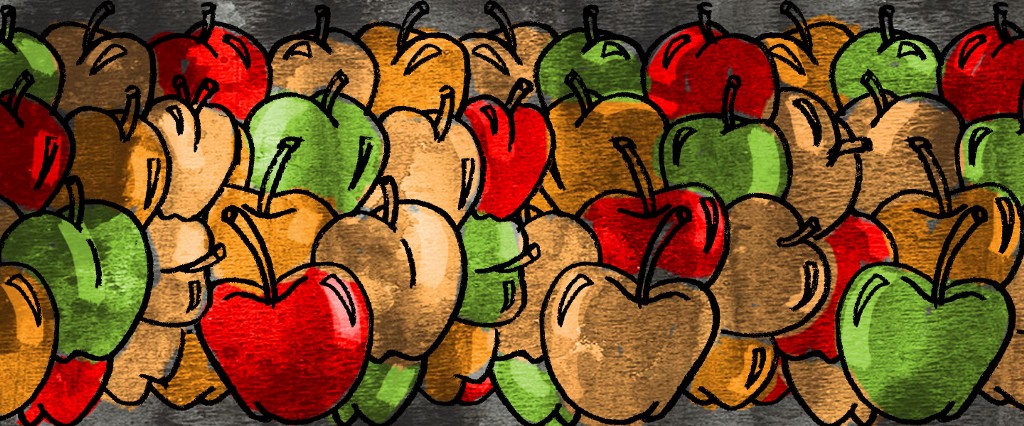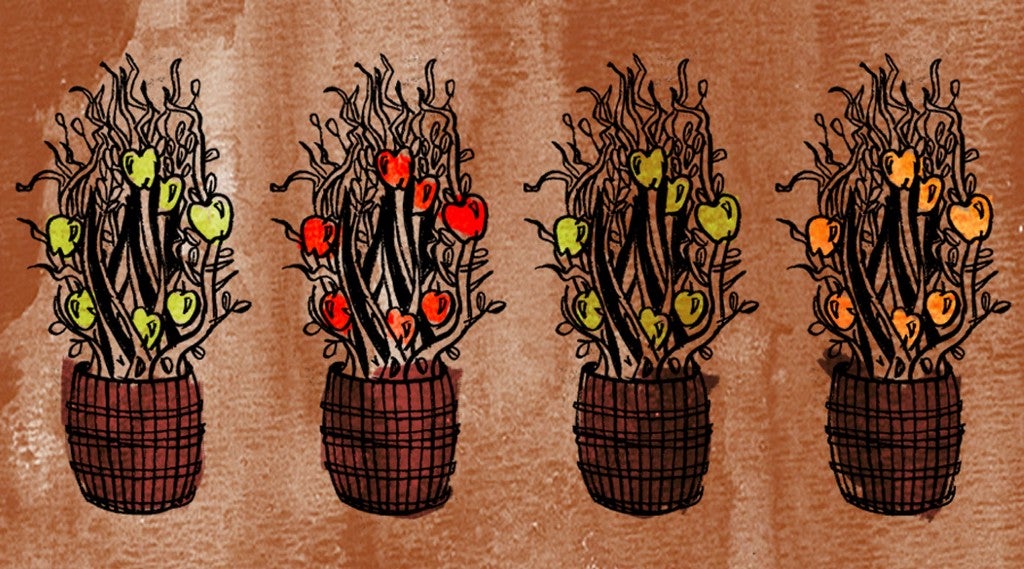Deep in the woods of western Massachusetts, in a small, rough-hewn house, Field Maloney opens the basement door of a dimly-lit cellar. A typically dank and musty smell familiar to old houses in New England rises from within, this one tinged with a strong hint of apples.
Leading the way down the creaky steps, Maloney gives a tour of the country’s oldest active cidery, West County Cider, where some of the best hard apple cider in the world is made. Though he’s built like a linebacker — with a broad ruddy face and rough, outsized hands — his soft voice and shy manner belie his former life as an editor at the New Yorker.
Stainless steel tanks line the walls. A hand-operated bottling machine looks like something out of The Jetsons. Over in the shadows, pushed against the far wall, is a Velo Technologies pressurized leaf filter. A looming Italian-made metal machine from the 1970s, it’s this obscure object that forced Maloney to rethink the course of his life.
As Maloney tells it, one afternoon in January 2010 his 70-year-old father Terry was here in the basement with Mike Barnes, the only real employee West County has ever had, filtering a batch of cider. The pressure inside the antiquated machine can easily reach nearly 30 pounds per square inch of force. Suddenly, a metal cap flew off the filter and hit Terry square in the forehead with such force that he was knocked to the packed dirt floor. He died later that day.
At the time, the younger Maloney was in California, researching fermentation methods used in local vineyards and working on a book. With his father’s death, his mother, Judith, became the sole remaining full-time employee of West County Cider, except she wasn’t up to the task of running the business on her own. It was clear that Maloney was destined to return home to Colrain, Massachusetts, population 1,617. It had plenty of cows — according to the town’s website, Colrain boasts the most active dairy farms in the state — but no broadband internet. Not exactly the life he’d envisioned for himself.
But he had no choice: “I felt like I was needed.”
Maloney sits down at a small table on the front porch of the house where he grew up. Insects sing their songs of summer; Snowball the dog romps in the long grass; and laundry hangs on a line that stretches from the side of the house to a one-room cabin, West County’s original tasting room. Later, an extra bedroom was added to the cabin for the times when Maloney’s grandmother visited. The sun has begun to disappear behind the thick forest. We drink from metal bowls a mash of hard cider and raspberries, an unusual beverage Maloney has just whipped up in the kitchen.

Maloney’s parents arrived in Massachusetts during the summer of 1972. After Terry finished medical school at the University of California, Berkeley, he and Judith drove across the country in a repurposed school bus, painted baby blue; they ended up in western Massachusetts, where Terry found work in the ER of a local hospital. In 1978, Maloney was born at home on the kitchen table. Since the Maloneys were living in a town called Plainfield, the child was named Field, after the place where the couple had found a life together.
When Maloney was two, the family moved to a lot in the dense New England woods. After clearing the land themselves, the couple set to work building a 600-square-foot house. For the first year, they lived in the basement.
To the extent they could, the Maloneys lived off the land. They raised chickens and grew vegetables. By the time Maloney reached sixth grade, his parents had cleared enough land to plant their first orchard of heirloom apple trees. Terry had procured the seeds from Cornell University’s Plant Genetic Resources Unit’s national apple collection in Geneva, New York. Though heirloom apples are nearly inedible compared to more common strains like Golden Delicious — many people call them “spitters” — they were the first type grown widely in America. At one time, this part of Massachusetts — and much of New England — was known for its heirlooms.
As the apple harvest came in, the Maloneys experimented with myriad uses for the apples. Pies. Butter. Sauce. Anything they could think of. Then Terry started reading up on the history of the heirloom apple. That’s when he hit upon an idea: hard apple cider!
The tradition of drinking hard cider had come to America with the first European settlers. For decades it was a staple of American life. Because water quality was often questionable, the first colonists relied upon cider for drinking in the same way Europeans relied upon beer during the Dark Ages. And cider is easier to make than beer — the only ingredients necessary are the fruit itself and the yeast found on the skin of the apple. As Terry discovered though his research, most of the apple trees planted across the country by early settlers were intended for cider-making, not eating.
But after Germany introduced lagers in the 19th century, cider’s popularity began to decline. Prohibition was a nail in the coffin. Growers across the country began scrapping their heirloom apple varieties in favor of strains that tasted better and were easier to eat. Since then, the idea of cider has become associated with the kind of sugary nonalcoholic drink sold in abundance every autumn.
Nevertheless, with encouragement from friends and neighbors, Terry began making his hard cider in larger quantities, and by 1984, he began bottling and selling his family’s hard cider under the West County moniker. “My dad loved the idea that there was this art of fermenting cider that had been sort of lost,” Maloney says. “He had all those apples. The idea was to apply the scientific winemaking techniques used in California to this age old cider thing.”
While working full-time as an ER doctor, Terry continued to produce about 1,000 bottles of his ever-evolving special blend of hard cider per year — slightly more or less depending upon the plenty of the harvest. The market was small, but Terry wasn’t doing it for the money. He took great pride in his product, a modern invocation of America’s first beverage of choice, brought from the earth and fermented lovingly by his own hands.

After graduating from Princeton in 1997, Field Maloney moved to Boston to actively sell the brand. He took part-time jobs as a baker and a landscaper to pay his rent. Though the process was grueling — trying to convince proprietors they needed a new drink in their already-crowded shelves wasn’t easy — sales of West County Cider rose by 80 percent. In time, however, it became clear to Maloney that the salesman’s life wasn’t for him. From the beginning, like his father, he considered himself a craftsman. He drifted back to the homestead, to the basement, working closely with his dad.
Time passed. Maloney was offered a job at a wine store in Manhattan. Looking to improve his palette and his knowledge of the beverage industry and hankering for a faster lifestyle with fewer cows, he decided to take it. As things happen in New York City, his path took an unusual turn. Through a Princeton contact he found himself working as an editorial assistant at the New Yorker.
Over time, Maloney began contributing to the magazine’s “Talk of the Town” section. Eventually he was made an editor in the storied fiction department. From there he parlayed his contacts and experience further; in 2008, with a book contract in hand, he left the magazine for Napa Valley, to write about the experience of picking grapes and working in the fields in some of the world’s best vineyards.
Two years later, West County Cider’s faithful Velo Technologies pressurized leaf filter blew its cap, killing Terry Maloney and bringing Field back home to the small house in the New England forest he grew up in.
Atop a hill, and a few miles from the Colrain town line in Shelburne Falls, there’s an abandoned apple warehouse that’s gone unused for more than 20 years, a legacy of the days when the apple was king in these parts. Maloney plans to convert the old warehouse into a modern facility where he’ll be able to make cider on a larger scale. Last year, West County Cider produced 4,000 cases. With this factory online, Maloney could produce many times that amount.
And it could be that boom times are coming.
With the craft beermaking movement swelling to a frothy crescendo recently, cognoscenti have begun to take a renewed interest in hard cider, with products on the market that range from 2 to 6 percent alcohol. Even big beer distributors like Budweiser have been experimenting with their own lines of cider. From festivals such as Pour the Core and New York Cider Week, to the growth of domestic brands like Boston Beer Company’s popular Angry Orchard, the U.S. cider market is predicted to grow 65 percent between 2011 and 2016. The resurgence of cider also has prompted talk about the beverage’s composition and potential health benefits as opposed to beer — it’s increasingly popular as a gluten-free option for beer lovers who can’t drink beer. “There’s a pretty big market that’s growing out there,” Maloney says quietly. “We’ve got a lot of work ahead.”
He shakes his head at the odd workings of the universe — and how his father seemingly knew it before everyone else. “My dad had this crazy idea that was so off-the-grid. But now, it’s become a new trend.”
